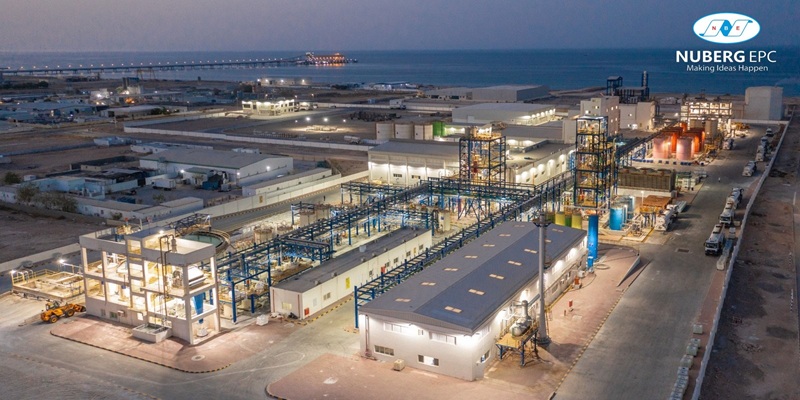Schedule a Call Back
How different will be the post-Covid supply chain?
 Industry News
Industry News- Jan 31,22

In an article in the New York Times, 1 June 2021, Goodman and Chokshi argue that many of the concepts that drove supply chain transactions pre-Covid have outlived their usefulness. Or, even, proving counterproductive, and, worse still, may have directly resulted in the slow restart many industries are experiencing after Covid. These pre-Covid practices have crippled the supply chains, to the extent that, these are now holding back the recovery.
They cite the instance of the auto industry, the ‘inventor’ of these pre-Covid practices, such as, lean, JIT (Just-in-Time), cost cutting, holding low inventories, where the supply chain ‘vacuum’ has forced many auto companies to cut down on production drastically. Why? Because of the shortage of availability in ‘electronic chips’ which are now required in all automobiles to serve the needs of the computer-controlled systems. They link this ‘shortage’ directly to the JIT practices. And they postulate that lean has led to cost cutting, which has, in turn, put the screws on inventory holding. This ‘lowest cost’ mentality has hurt the industry, by emptying out the inventory pipelines, which are the saviours, whenever there is a surge in demand. The situation is not very different, each industry has a ‘shortage of chips’ story to tell.
Toyota introduced the concept of the ‘Toyota Production System’, or TPS, which is a combination of JIT, lean, waste reduction, etc. The TPS is not lean, but western thinkers, when explaining to their domestic business audiences, used the terminology lean to mean three things – JIT, waste reduction and cost reduction. The TPS was, in reality, a graded, evolving response from Toyota to the increasingly competitive markets, and was primarily developed as a tool to align and integrate the ‘back-end supply chain’ with the ‘front-end supply chain’ by creating linkages, through information generation and sharing. (See Figure 1. The bottom arrows indicate information and knowledge flow, ‘feedback’)
In many ways, TPS is a well compounded mixture of activities which allow for internal adjustments of speed and quality, of changes large and small, which operated under the overall ‘Four Principles’ (or 4P) framework. These principles are: philosophy, process, people/ partners and problem solving. These include many things, apart from lean, JIT, etc., such as, Quality Function Deployment (QFD), Plan-Do-Check-Act (PDCA), Customer Relationship Management (CRM) and so on. The US interpreters, led by Womack and Jones at MIT, and Jeffrey Liker, at Michigan University, tried to sell lean in the way the US industry would understand easily – overall cost reduction through improved manufacturing practices. Cost reduction was emphasised as it would improve profit. JIT, low inventories, were all options.
Industries in Europe started the practice of the ‘Lean Bundle’ (lean bundle is a mix of lean management, JIT, QFD, low inventories, waste reduction, process orientation) in early 1990’s, as did the US. However, they emphasised the ‘hard’ concepts in preference to the ‘soft’ ones, such as, philosophy, people/ partners. This led to a partial implementation of TPS, and this was the dominant practice prior to Covid. The manufacturing industry in the west, led by the auto makers, garments, leather goods, and many others went on a cost cutting binge, by relocating the ‘back-end supply chain’ to China, India, and other low-cost countries like Vietnam, Thailand, Bangladesh and Philippines. As a result, the manufacturing industry underwent a huge transformation, summarised in Figure 2. The ‘Red’ bordered clusters are areas where value creation is predominant. The blue bordered ones are those which are ‘back-end supply chains. The whole world is a ‘front-end supply chain’.
The clustering that has taken place has created oceans of ‘back-end suppliers’ and ‘value creators’, with the whole world being the ‘front-end supply chain’. There are some ‘holistic clusters’, like China, India and the US, which have large chunks of all the three clusters. The driver for this development is clearly cost reduction, and not lean or JIT. For example, many US companies closed down their ‘lower value adding’ activities in their ‘back-end chains’ to low-cost centres like China, India and others. This download has created its own problems, especially when dealing with large ‘back-end supply chains’, with a big clout to create major disturbances in the back-end supply chain – value creation universe.
In the pre Covid scenario, many companies enlarged/ created ‘back-end supply chain’ tails which were completely antithetic to the TPS thinking. Whereas the TPS philosophy sought to keep suppliers and vendors close to the value creator, including through equity holdings and manpower participation (this is typical of Toyota), US and European companies created huge ‘back-end supply chains’ but without either the equity participation, or adequate control over operations to ensure the benefits envisaged from such arrangements. Off-shoring is but one example of this. Such manufacturing chains could withstand Force Majeure conditions of limited impact, in terms of time and magnitude. But they were not designed to withstand the Covid disaster, for which a new term has to be invented, because Covid is not a force majeure condition, it is something much more than that, both in terms of magnitude and time. The new term is ‘Disruption Majeure’, this needs to enter the legal lexicon and businesses need to figure out how to deal with this in the future. Both, Force Majeure and Disruption Majeure, need to be separated and treated differently. We will show a pathway which companies can consider, post Covid.
Manufacturing chains – post Covid
We have thus established that the major reasons for the disastrous situation many companies in the west found themselves in were: discontinuous back-end supply chains characterised by inadequate operational or equity/ management control, long distances between the value creation and back-end activities, years of cost cutting and cost management leading to short term gains but starved inventories, dry inventory pipelines and capacity build downs. The question then is: how to go about building a new model of the manufacturing chain which will work well beyond Covid.
Beyond Covid, the main changes likely are: impact of Industry 4.0 (with greater integrated manufacturing using IOT, AI, ML, Cloud Computing, etc.), long periods of interruptions due to ‘Disruption Majeure’ conditions, increased rate of demands to compensate for the very low consumption during the Covid driven disruption periods. At the end of every disruption, there is likely to be a surge in demand for many consumables due to the pent up, unsatisfied needs. This will not only put pressure on the front-end chain but also on the value creation chain as well. Which, in turn, will make sudden and unpredictable demands on the back-end chain. Companies will have to not only fight battles for meeting the demand for their products, but do so in a way that prevents Covid promoting conditions from developing. If Covid were to again affect the world in the same way as in the last two years, then we will once again witness the ‘Disruption Majeure’ state, with disastrous consequences.
The primary objectives of companies post Covid will be ‘safe business operations’, ‘uninterrupted business operations’ and ‘integrated manufacturing operations’. These three pillars of post Covid business will lead companies to take up multiple actions to redesign the manufacturing value chain in its entirety.
‘Toyota Production System’ will have to be practiced not as a cost cutting effort, but as a company managing effort. This will mean full or partial ownership of back-end chains, wasteless, flexible and customer driven (and lean imputed) value creation chains, and a Theory of Constraints (TOC) centric front-end chain which will not only sense demand surges but also adjust itself to deliver customer value. Industry 4.0 practices will facilitate lean manufacturing like never before, and enable production of ‘zero defect’ goods and services, which will not only improve the quality of the output, but also result in speedy deliveries. End to end delivery cycle times are bound to be reduced by more than 30%.
How to safeguard against ‘Disruption Majeure’? That will be done through the redesigned manufacturing chain configuration which will allow for the carrying of acceptable inventories across the full value chain, with the help of Industry 4.0 practices under TPS. The new manufacturing chain is shown in Figure 3.
The effect of post Covid operations on companies are at two levels. One, at the value chain design level, as shown in Figure 3. At the macro, physical level, there are bound to be some key changes. Companies are going to get their back-end chains closer to them, geographically. However, in order to still keep cost and supply advantages, some parts of the back-end chain will continue to remain in low-cost but efficient geographies. Thus, there will be broadly two back-end chains, one, which guarantees supplies during the ‘Disruption Majeure’ conditions, and, the second, holds the cost during the normal, day to day business dealings. This would lead to new types of clusters, as shown in Figure 4.
The clusters (shown in Figure 4) are now ‘integrated clusters’, signifying that much of the back-end supplies are in close proximity. Inter cluster transactions, to augment supplies will continue, but at a lower intensity than pre-Covid, and with the new applicable conditions regarding Industry 4.0 compliance etc. Thus, the new world manufacturing order is likely to be more resilient due to the practice of TPS, ‘integrated cluster’ formation and the usage of the new ‘Disruption Majeure’ compliant manufacturing value chain.
About the author:
R Jayaraman is the Head, Capstone Projects, at Bhavan's S P Jain Institute of Management & Research (SPJIMR). He has worked in several capacities in the Indian industry, including Tata Steel, for over 30 years. He has authored more than 60 papers in academic and techno economic journals in India and abroad. Jayaraman is also a qualified and trained Malcolm Baldrige and EFQM Business Model Lead Assessor.
Related Stories

NITI Aayog Unveils "Reimagining Manufacturing: India’s Roadmap to Global Leadership in Advanced Manufacturing"
NITI Aayog’s Frontier Tech Hub has launched a roadmap outlining India’s journey to becoming a global leader in advanced manufacturing by 2035.
Read more
How Indian manufacturers can thrive in the volatile global supply chain era
In this article, Dijam Panigrahi, Co-founder and COO, GridRaster Inc, explores how manufacturers can build resilient, agile supply chains by leveraging technology, investing in people, and forming s..
Read more
India’s Decarbonisation Journey: Turning Climate Challenge into Opportunity
While decarbonisation is increasingly becoming a prerequisite to access premium global markets, India's path to net-zero by 2070 is complex. However, with coordinated action, strategic investments, ..
Read moreRelated Products

Automotive Oil Pump
Kalpak Auto Pvt Ltd offers a wide range of
automotive oil pump.
Tata Motors unveils facilities for development of Hydrogen propulsion tech
Tata Motors, India?s largest automobile company, unveiled two state-of-the-art & new-age R&D facilities for meeting its mission of offering sustainable mobility solutions. The unveilings constitute of Read more
Tata Motors plans petrol powertrain for Harrier and Safari SUVs
Tata Motors is in the process of developing a new petrol powertrain for its premium sports utility vehicles, the Harrier and Safari, as confirmed by a senior company official. Currently, these models Read more
















